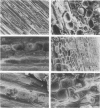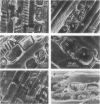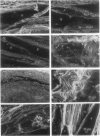Abstract
The objective of the current research was to examine the response of woody plant tissues to freezing stress by using scanning electron microscopy (SEM). Nonsupercooling species red osier dogwood (Cornus stolonifera Michx.), weeping willow (Salix babylonica L.), and corkscrew willow (Salix matsudana Koidz. f. tortuosa Rehd.) survived freezing stress as low as −60°C. Cell collapse of ray parenchyma cells of these species was expected but did not occur. It was concluded that ray parenchyma cells of these species do not fit into either the supercooling or extracellular freezing classifications. Tissues from flowering dogwood (Cornus florida L.), apple (Malus domestica Borkh. cv “Starking III”), red oak (Quercus rubra L.), scarlet oak (Quercus coccinea Muench.), and red ash (Fraxinus pennsylvanica Marsh) were confirmed as supercooling species, and did not survive exposures below −40°C. Ray parenchyma cells of these species did not collapse in response to freezing stress, as was expected. Cell collapse along the margins of voids were observed in bark of all seven species. Voids were the result of extracellular ice crystals formed in the bark during exposure to freezing stress. Tissues prepared by freeze substitution techniques were found to be adequately preserved when compared to those prepared by conventional fixation and low temperature SEM techniques. A freezing protocol for imposing freezing stress at temperatures lower than experienced naturally in the area where the study was conducted was developed that produced responses comparable to those observed in specimens collected in the field during natural freezing events.
Full text
PDF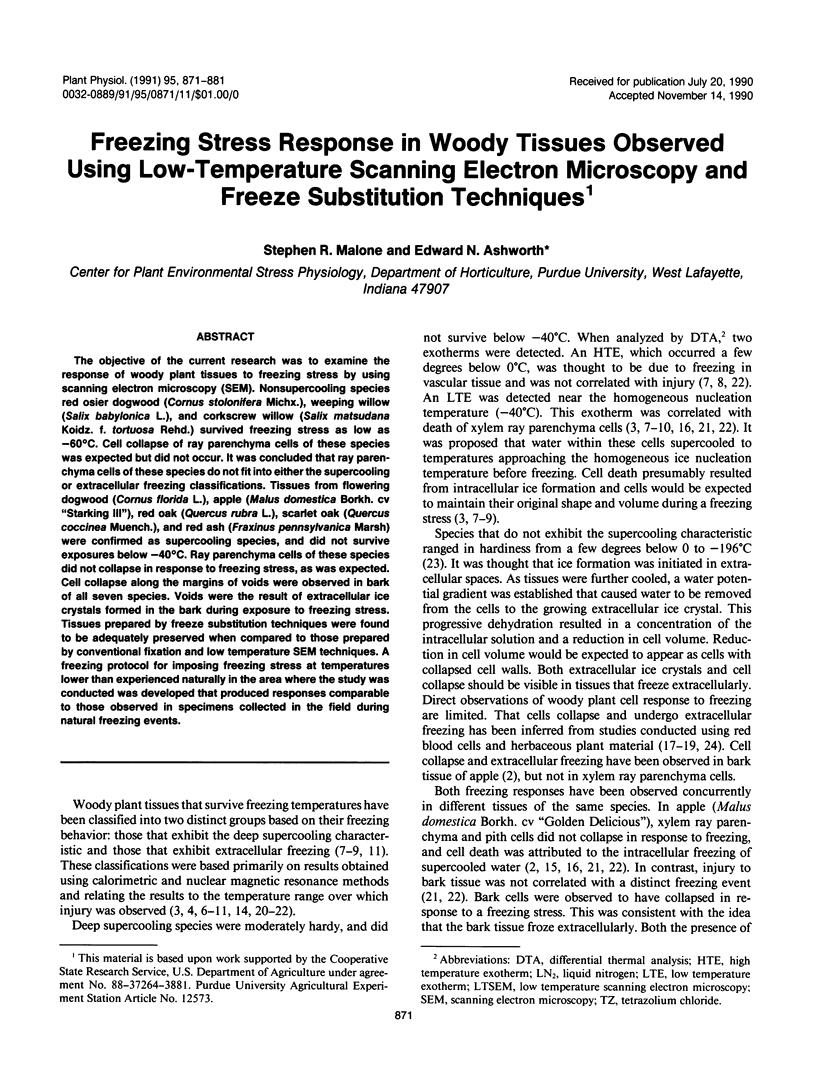
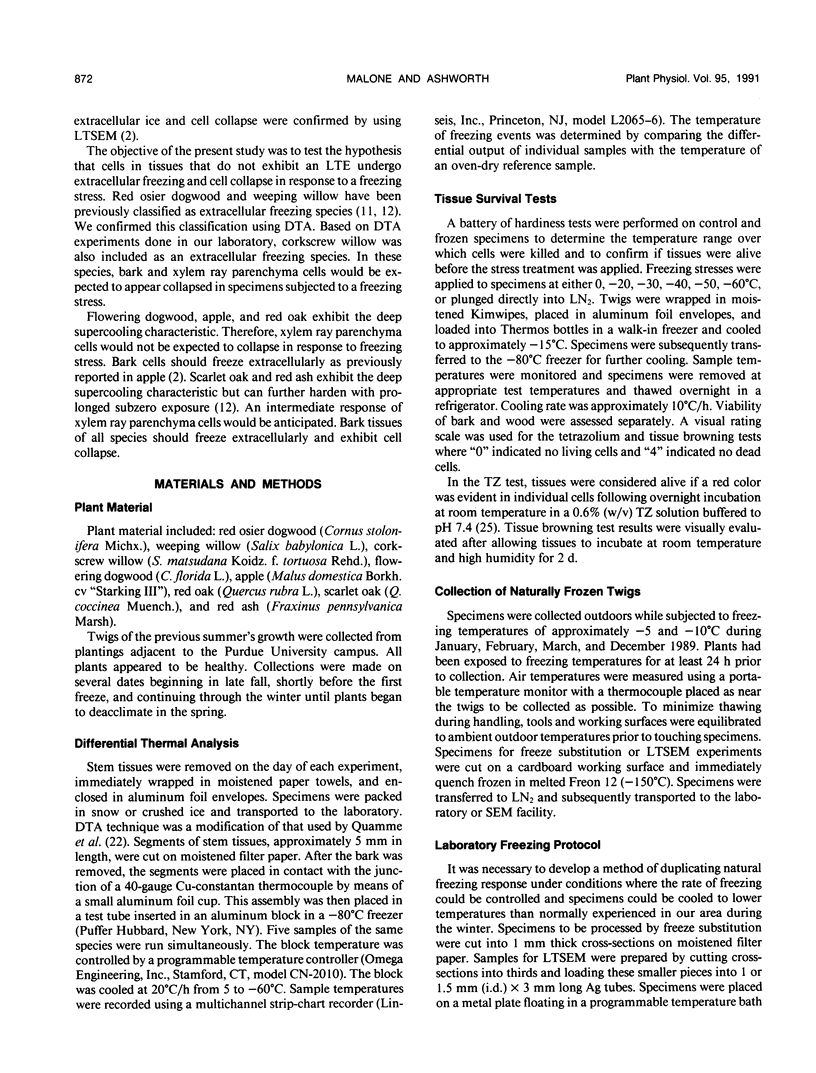
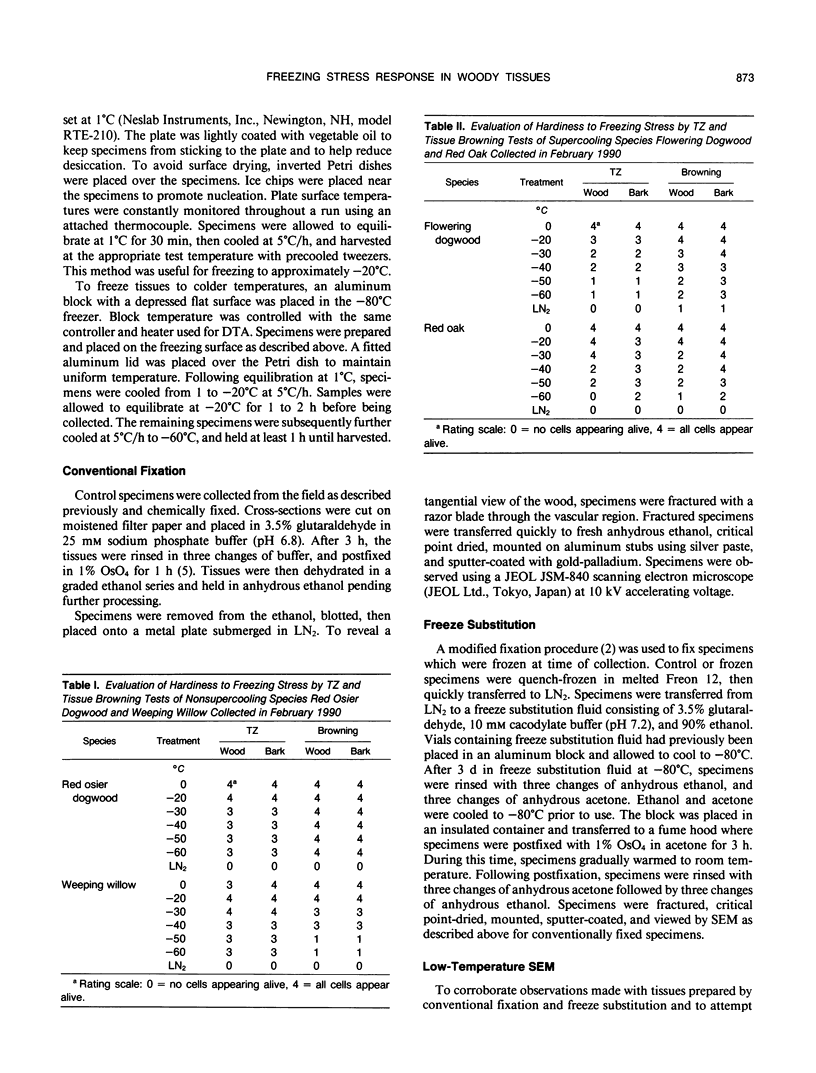
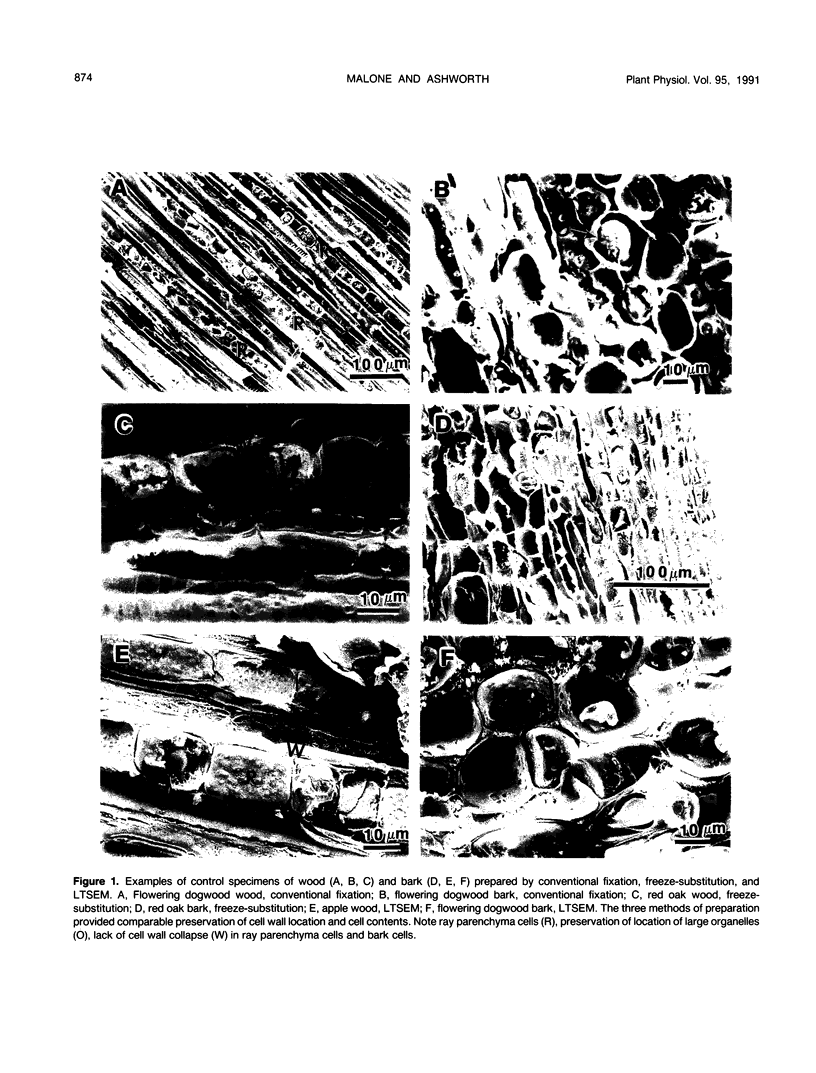
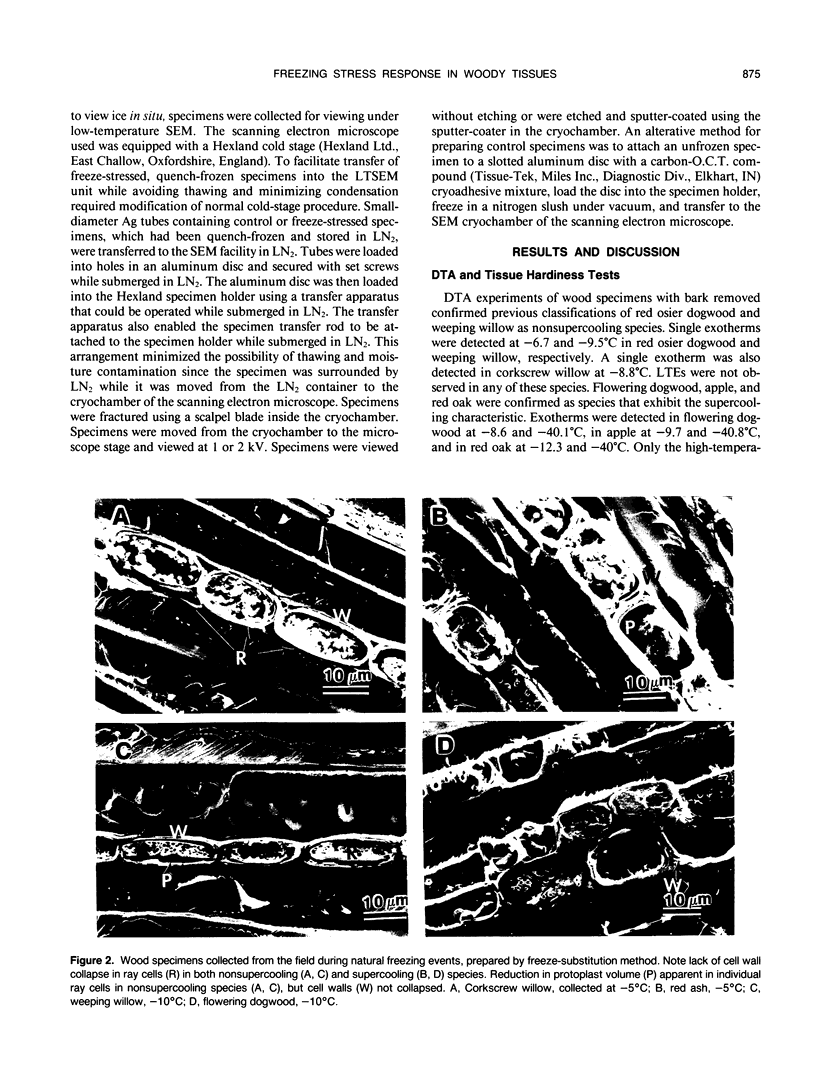
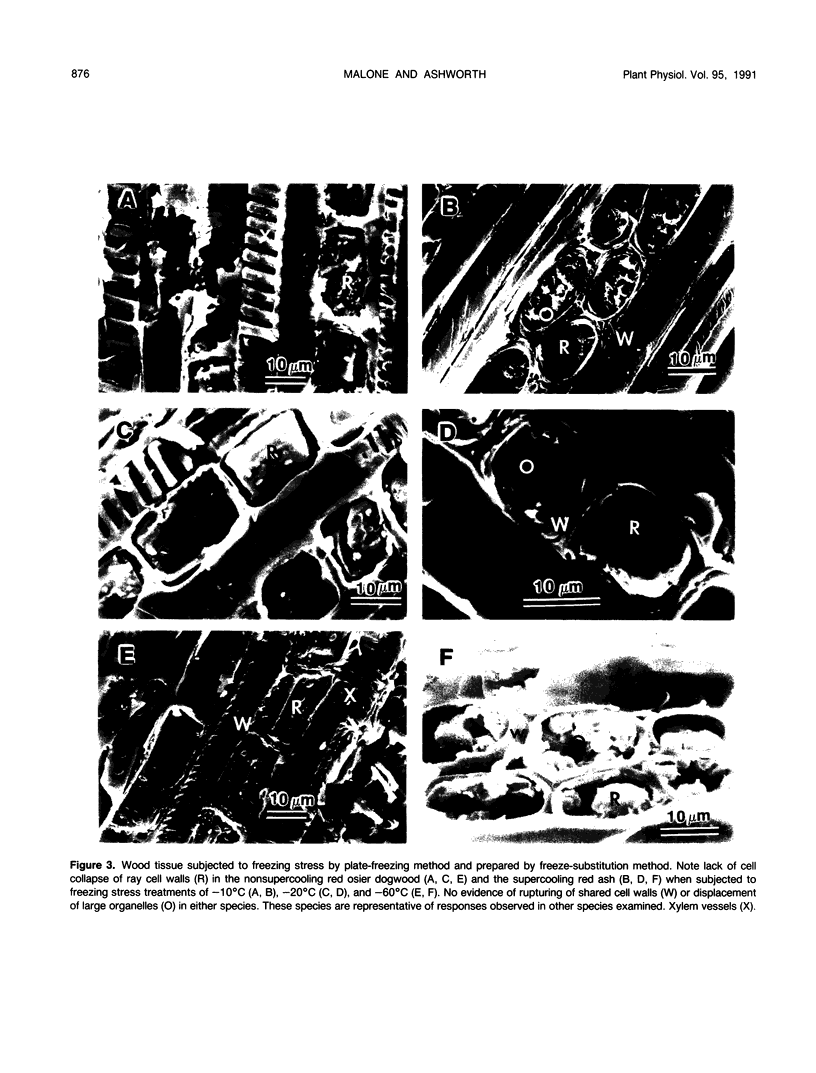
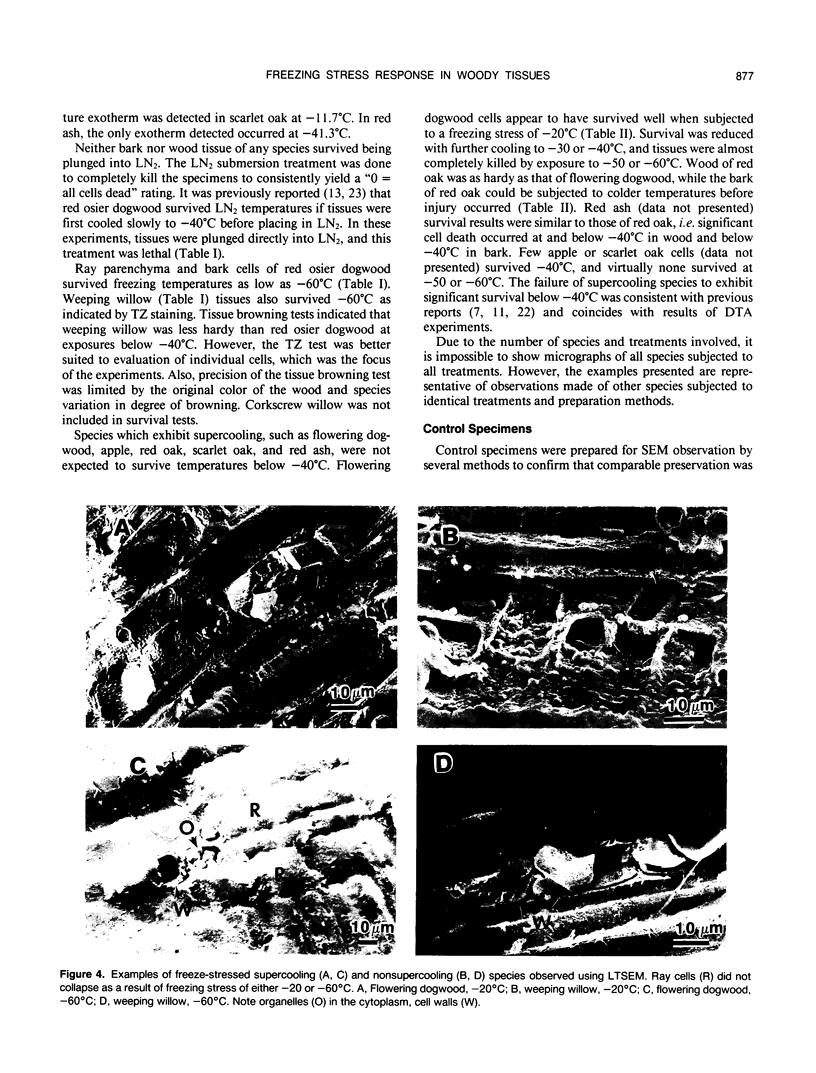
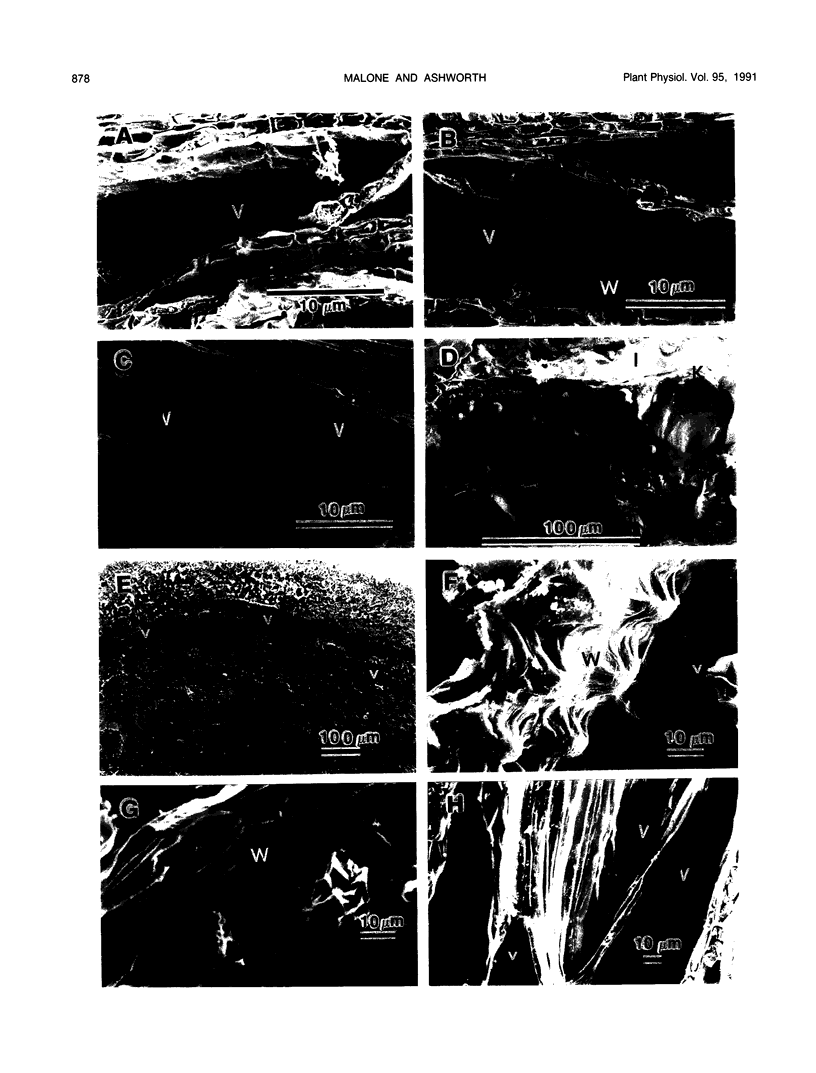
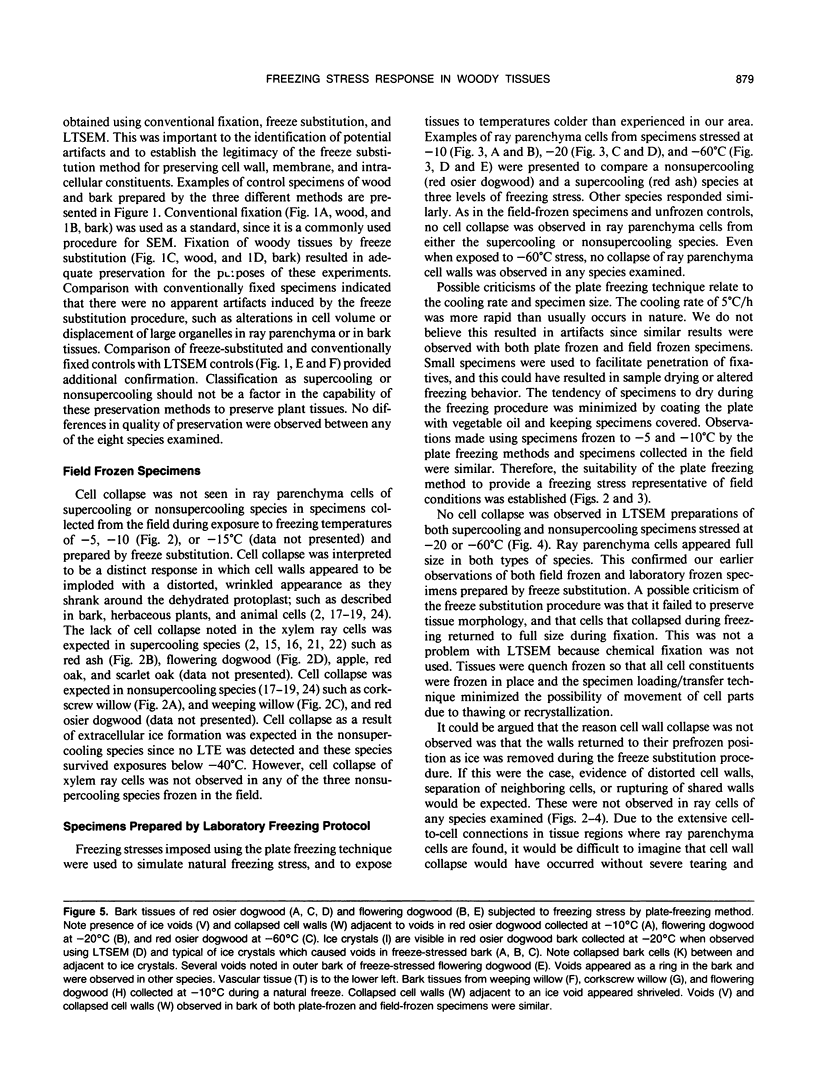
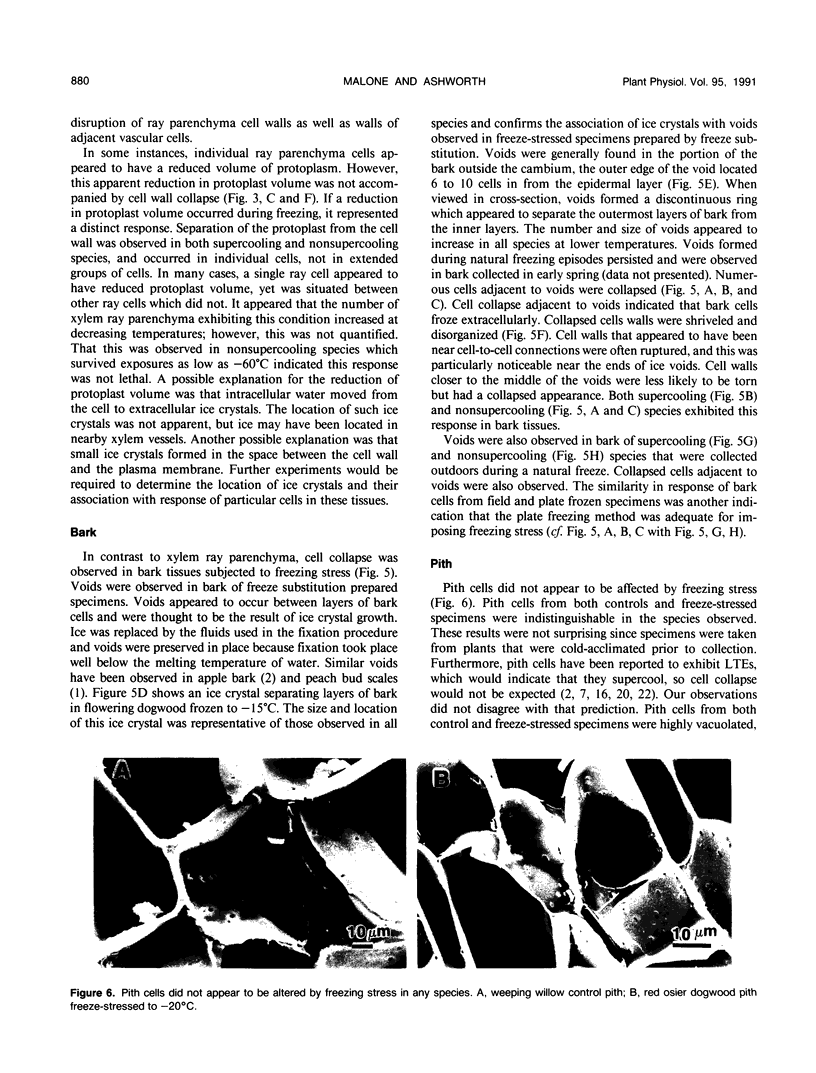
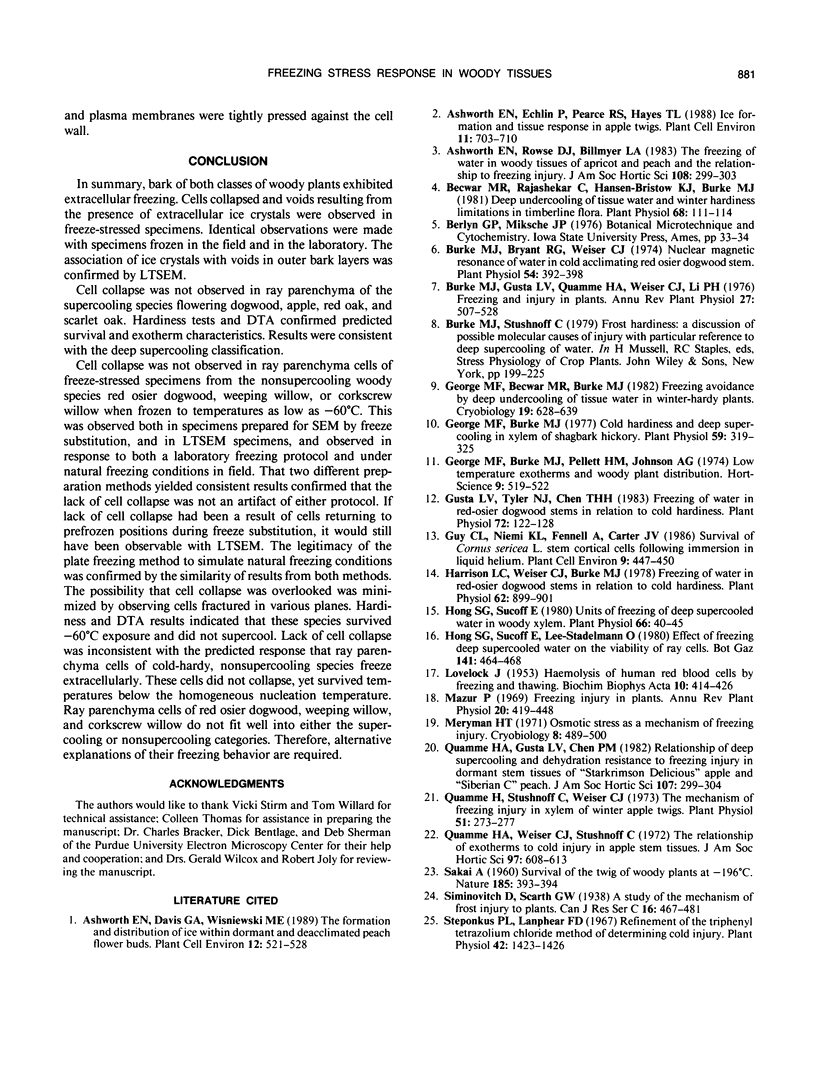
Images in this article
Selected References
These references are in PubMed. This may not be the complete list of references from this article.
- Becwar M. R., Rajashekar C., Bristow K. J., Burke M. J. Deep undercooling of tissue water and winter hardiness limitations in timberline flora. Plant Physiol. 1981 Jul;68(1):111–114. doi: 10.1104/pp.68.1.111. [DOI] [PMC free article] [PubMed] [Google Scholar]
- Burke M. J. Nuclear magnetic resonance of water in cold acclimating red osier dogwood stem. Plant Physiol. 1974 Sep;54(3):392–398. doi: 10.1104/pp.54.3.392. [DOI] [PMC free article] [PubMed] [Google Scholar]
- George M. F., Becwar M. R., Burke M. J. Freezing avoidance by deep undercooling of tissue water in winter-hardy plants. Cryobiology. 1982 Dec;19(6):628–639. doi: 10.1016/0011-2240(82)90192-4. [DOI] [PubMed] [Google Scholar]
- George M. F., Burke M. J. Cold hardiness and deep supercooling in xylem of shagbark hickory. Plant Physiol. 1977 Feb;59(2):319–325. doi: 10.1104/pp.59.2.319. [DOI] [PMC free article] [PubMed] [Google Scholar]
- Gusta L. V., Tyler N. J., Chen T. H. Deep Undercooling in Woody Taxa Growing North of the -40 degrees C Isotherm. Plant Physiol. 1983 May;72(1):122–128. doi: 10.1104/pp.72.1.122. [DOI] [PMC free article] [PubMed] [Google Scholar]
- Harrison L. C., Weiser C. J., Burke M. J. Freezing of water in red-osier dogwood stems in relation to cold hardiness. Plant Physiol. 1978 Dec;62(6):899–901. doi: 10.1104/pp.62.6.899. [DOI] [PMC free article] [PubMed] [Google Scholar]
- LOVELOCK J. E. The haemolysis of human red blood-cells by freezing and thawing. Biochim Biophys Acta. 1953 Mar;10(3):414–426. doi: 10.1016/0006-3002(53)90273-x. [DOI] [PubMed] [Google Scholar]
- Meryman H. T. Osmotic stress as a mechanism of freezing injury. Cryobiology. 1971 Oct;8(5):489–500. doi: 10.1016/0011-2240(71)90040-x. [DOI] [PubMed] [Google Scholar]
- Quamme H., Weiser C. J., Stushnoff C. The mechanism of freezing injury in xylem of winter apple twigs. Plant Physiol. 1973 Feb;51(2):273–277. doi: 10.1104/pp.51.2.273. [DOI] [PMC free article] [PubMed] [Google Scholar]
- Steponkus P. L., Lanphear F. O. Refinement of the triphenyl tetrazolium chloride method of determining cold injury. Plant Physiol. 1967 Oct;42(10):1423–1426. doi: 10.1104/pp.42.10.1423. [DOI] [PMC free article] [PubMed] [Google Scholar]



